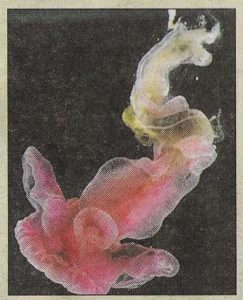According to a recent report in the Sunday Mail (4/12/16), acorn worms can apparently regrow any of their body parts from nothing. The report was written by Harry Pettit from Washington, USA. He says that “researchers hope that unravelling the worm’s DNA could lead the team to human limb regeneration”. The researchers involved are from the University of Washington and they are trying to open full limb regeneration in humans.
The acorn worm apparently has a genetic makeup like that of humans. The researchers have found that acorn worms can regrow every body part from nothing, including the head and internal organs. The worm’s healing power has been likened to that of X-Men’s Wolverine’s rapid healing powers. If researchers can decipher the worm’s self-healing genetic code, “tissue from a human amputee could be collected and the genes from those tissues activated to trigger regeneration. A tissue graft could then be fused on to the amputee’s severed limb and the arm or leg would regrow to normal size.”
Acorn worms cut in half grew head or tail parts on each severed end, creating two new worms. This is like the severed arm of a starfish growing more arms and becoming a new starfish. Acorn worms growing a new head would grow a new mouth after just three days, a new heart and kidneys after 5-10 days and a new neural tube within 15 days. The neural tube is the worm’s equivalent to a human spinal cord and brain. Researchers suspect that “master control” genes are responsible for the worm’s healing process.
The report in the Sunday Mail caught my eye due to the accompanying photo of a colourful acorn worm said to live on coral reefs.
The photo of a colourful acorn worm said to live on coral reefs
(Source: Sunday Mail 4/12/16)
The reference to acorn worms living on coral reefs was repeated in the article. I had, however, heard of the occurrence of acorn worms in South Australia’s temperate waters so I wanted to check the situation out.
After first searching online, I resorted to books within the MLSSA library. I eventually discovered that acorn worms are a group of animals quite distinct from all other marine worms. They belong to the Phylum Hemichordata, a phylum covered on a single page at the end of Karen Gowlett-Holmes’ book “A field guide to the marine invertebrates of South Australia”. It was the very last page of some 17 phyla. Karen says that there are about 100 species of acorn worms worldwide. Just two types from SA feature in her book. These are only identified to genus level – Balanoglossus and Protoglossus.
Balanoglossus species are said to occur throughout the southern coast of Australia. Protoglossus species are said to be isolated to the southern gulf waters of SA. Balanoglossus species are said to be responsible for large piles of coiled worm castings often seen on sandy beds.
The single reference for Karen’s acorn worm details was “Marine Invertebrates of Southern Australia – Part III”, edited by S.A. Shepherd & M. Davies. The relevant chapter is Chapter 20, “Acorn Worms and a Pterobranch (Phylum Hemichordata)” by Scoresby Shepherd. It is a brief chapter but there are a good number of drawings and diagrams.
It seems that acorn worms are not actually worms, merely worm-like. Some ten species are detailed in the book.


